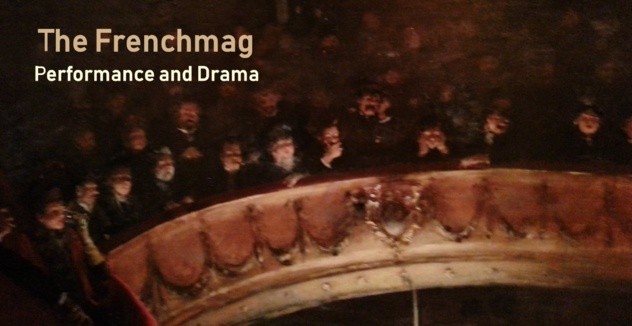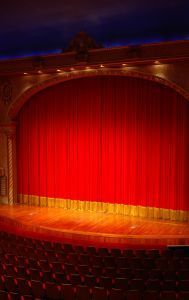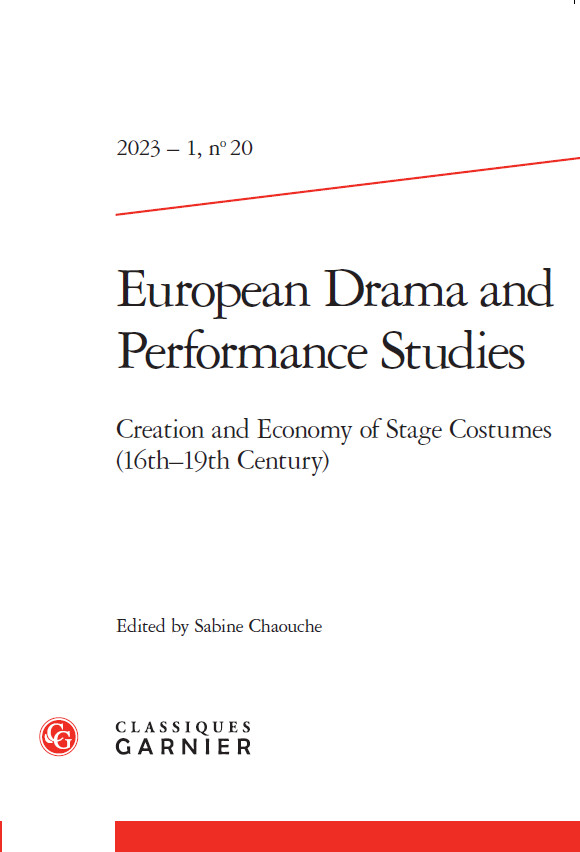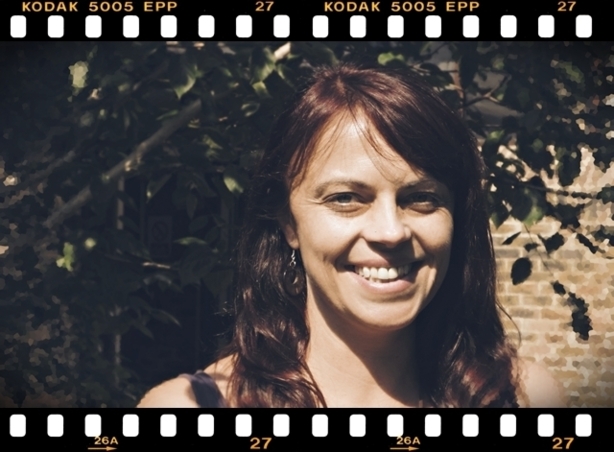
Dr Alex Goody (c) Sabine Chaouche
Dr Alex Goody is Reader in C20 Literature at Oxford Brookes University (UK) and specialises in Modernist Studies as well as American Literature and Culture. She is an expert in Drama (especially Djuna Barnes), and is working on a new exciting and innovative project relating to technology (radio drama).
What was your first research topic?
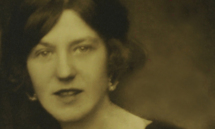
Mina Loy
Moreover, the Moon ---
Face of the skies
preside
over our wonder.
Fluorescent
truant of heaven
draw us under.
Silver, circular corpse
your decease
infects us with unendurable ease,
touching nerve-terminals
to thermal icicles
Coercive as coma, frail as bloom
innuendoes of your inverse dawn
suffuse the self;
our every corpuscle become an elf.
Mina Loy
Face of the skies
preside
over our wonder.
Fluorescent
truant of heaven
draw us under.
Silver, circular corpse
your decease
infects us with unendurable ease,
touching nerve-terminals
to thermal icicles
Coercive as coma, frail as bloom
innuendoes of your inverse dawn
suffuse the self;
our every corpuscle become an elf.
Mina Loy
Why have you got a particular interest in Gender Studies?
How did you relate Literature and Technology in your last monograph?
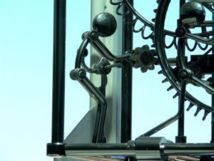
.
.
.
What kind of new pathways did your monograph on technology open?
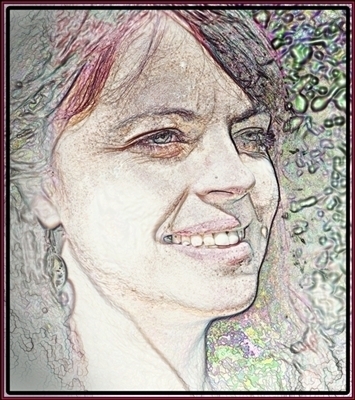
Dr Alex Goody (c) Sabine Chaouche
What were the role and impact of radio drama in the first part of the c20?
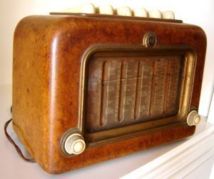
Old radio
.
"It's not true I had nothing on, I had the radio on."
― Marilyn Monroe
"It's not true I had nothing on, I had the radio on."
― Marilyn Monroe
You also specialize in Modernist Drama. What is your new project relating to Djuna Barnes?
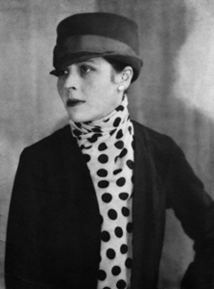
Djuna Barnes
"The title Antiphon (1958) suggests an archaic and static form, for an antiphon is a verse reply, as in an antiphonic hymn. Elizabethan in phrasing, the drama is antiphonal in several scenes; that is to say, a verse speech calls forth its immediate reply, rather than fitting into an overall action. Though the verse of The Antiphon is archaic, setting and plot are relatively modern—the one recalling Eliot and the other Yeats. Like Eliot's Family Reunion, The Antiphon is set in an English country house; curiously, the date of production of Family Reunion is the date within The Antiphon—1939, the beginning of World War II. The war is the play's present, but the characters are mired in the past, as in Yeats' Purgatory. In both plays, a woman has betrayed her aristocratic heritage by lust for a commoner…."
Ruby Cohn, "Djuna Barnes," in her Dialogue in American Drama, Indiana University Press, 1971, pp. 207-11.
“A man is whole only when he takes into account his shadow.”
― Djuna Barnes
Ruby Cohn, "Djuna Barnes," in her Dialogue in American Drama, Indiana University Press, 1971, pp. 207-11.
“A man is whole only when he takes into account his shadow.”
― Djuna Barnes
You envisage to stage "The Antiphon": how do you imagine the performance?
.
What innovative aspects did the modernist drama bring?
.
Interview by Sabine Chaouche
Interview by Sabine Chaouche
Recent monograph: "Technology, Literature and Culture" (Polity Press, 2011)
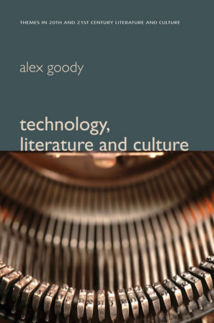
Technology, Literature and Culture provides a detailed and accessible exploration of the ways in which literature across the twentieth century has represented the inescapable presence and progress of technology. As this study argues, from the Fordist revolution in manufacturing to computers and the internet, technology has reconfigured our relationship to ourselves, each other, and to the tools and material we use.
The book considers such key topics as the legacy of late–nineteenth century technology, the literary engagement with cinema and radio, the place of typewriters and computers in formal and thematic literary innovations, the representations of technology in spy fiction and the figures of the robot and the cyborg. It considers the importance of broadcast technology and the internet in literature and covers major literary movements including modernism, cold war writing, postmodernism and the emergence of new textualities at the end of the century.
An insightful and wide–ranging study, Technology, Literature and Culture offers close readings of writers such as Virginia Woolf, Samuel Beckett, Ian Fleming, Kurt Vonnegut, Don DeLillo, Jeanette Winterson and Shelley Jackson. It is an invaluable resource for students and scholars alike in literary and cultural studies, and also introduces the topic to a general reader interested in the role of technology in the twentieth century.
Review:
"It is undoubtedly the broad engagement with popular and avant–garde culture, and the inclusion of technologies of production, destruction, replication, communication, transmission and reception that make the book so useful as a resource for researchers approaching the topic from a range of literary and cultural contexts, as well as a starting point for further study in the field. Though wide–ranging, the readings are never lacking in interest, managing to convey insightful, sophisticated and convincing arguments in accessible prose."
The British Society for Literature and Science
"From railways to C3 systems, Kipling to Kittler, Alex Goody draws deftly on a remarkable range of examples to chart the modern technological imaginary. She produces a useful and accessible overview of technology′s politico–cultural manifestations and an excellent survey of the theoretical underpinnings of recent scholarly approaches to the field."
Debra Rae Cohen, University of South Carolina
"This compelling study poses searching questions about modern subjectivities by exploring the intimate relationship between writing and technology. Goody persuasively demonstrates the intricate ways in which technology is embedded in popular and avant–garde culture, from Victorian technologies of electricity and photography to the management, robotic, military and leisure technologies of the twentieth and twenty–first centuries."
Martin Halliwell, Professor of American Studies, University of Leicester
"From the train crash to the photograph to the typewriter to hypertext, Alex Goody′s deft introduction to technology, literature and culture is as enlightening as it is pleasurable to read. Containing sophisticated arguments linking a range of theorists of technology, including Benjamin, McLuhan, Kittler, Jameson and Haraway, Goody also illuminates the unexpected ways in which nineteenth– and twentieth–century literature interacts with the technological developments of modernity. Whether your primary interest is modernist poetry, cyberpunk, James Bond or death by electrocution, this book has something for you."
Pam Thurschwell, University of Sussex
ORDER THE BOOK! Follow this link!
Conference by Dr Goody on Gender, Humanism and Technology
The book considers such key topics as the legacy of late–nineteenth century technology, the literary engagement with cinema and radio, the place of typewriters and computers in formal and thematic literary innovations, the representations of technology in spy fiction and the figures of the robot and the cyborg. It considers the importance of broadcast technology and the internet in literature and covers major literary movements including modernism, cold war writing, postmodernism and the emergence of new textualities at the end of the century.
An insightful and wide–ranging study, Technology, Literature and Culture offers close readings of writers such as Virginia Woolf, Samuel Beckett, Ian Fleming, Kurt Vonnegut, Don DeLillo, Jeanette Winterson and Shelley Jackson. It is an invaluable resource for students and scholars alike in literary and cultural studies, and also introduces the topic to a general reader interested in the role of technology in the twentieth century.
Review:
"It is undoubtedly the broad engagement with popular and avant–garde culture, and the inclusion of technologies of production, destruction, replication, communication, transmission and reception that make the book so useful as a resource for researchers approaching the topic from a range of literary and cultural contexts, as well as a starting point for further study in the field. Though wide–ranging, the readings are never lacking in interest, managing to convey insightful, sophisticated and convincing arguments in accessible prose."
The British Society for Literature and Science
"From railways to C3 systems, Kipling to Kittler, Alex Goody draws deftly on a remarkable range of examples to chart the modern technological imaginary. She produces a useful and accessible overview of technology′s politico–cultural manifestations and an excellent survey of the theoretical underpinnings of recent scholarly approaches to the field."
Debra Rae Cohen, University of South Carolina
"This compelling study poses searching questions about modern subjectivities by exploring the intimate relationship between writing and technology. Goody persuasively demonstrates the intricate ways in which technology is embedded in popular and avant–garde culture, from Victorian technologies of electricity and photography to the management, robotic, military and leisure technologies of the twentieth and twenty–first centuries."
Martin Halliwell, Professor of American Studies, University of Leicester
"From the train crash to the photograph to the typewriter to hypertext, Alex Goody′s deft introduction to technology, literature and culture is as enlightening as it is pleasurable to read. Containing sophisticated arguments linking a range of theorists of technology, including Benjamin, McLuhan, Kittler, Jameson and Haraway, Goody also illuminates the unexpected ways in which nineteenth– and twentieth–century literature interacts with the technological developments of modernity. Whether your primary interest is modernist poetry, cyberpunk, James Bond or death by electrocution, this book has something for you."
Pam Thurschwell, University of Sussex
ORDER THE BOOK! Follow this link!
Conference by Dr Goody on Gender, Humanism and Technology
Other publications:
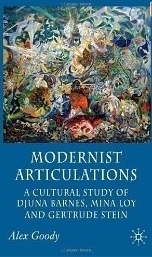
Monograph
Modernist Articulations. Published by Palgrave Macmillan, May 2007
A monograph that investigates the literature and culture of the early twentieth century exploring in particular the relationship of Djuna Barnes, Mina Loy, and Gertrude Stein to the aesthetic and cultural practices, and ideologies of the time. Examining and developing key tools and concepts of Cultural Studies and bringing these to bear on the field of modernist studies this book expands on previous theoretical and aesthetic cartographies of modernism.
Modernist Articulations. Published by Palgrave Macmillan, May 2007
A monograph that investigates the literature and culture of the early twentieth century exploring in particular the relationship of Djuna Barnes, Mina Loy, and Gertrude Stein to the aesthetic and cultural practices, and ideologies of the time. Examining and developing key tools and concepts of Cultural Studies and bringing these to bear on the field of modernist studies this book expands on previous theoretical and aesthetic cartographies of modernism.
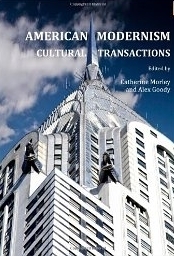
Edited volume:
American Modernism: Cultural Transactions. Published byCambridge Scholars Publishing, October 2009
A co-edited (with Dr Catherine Morley) collection of essays by renowed scholars in the field that explore the scope and impact of American Modernism in literature, cinema and the visual arts.
Journal Articles
'Empire, Motherhood and the Poetics of the Self in Mina Loy's Anglo-Mongrels and the Rose', Life Writing, vol. 6, no. 1 (2009)
'Cyborgs, Women and New York Dada', The Space Between: Literature and Culture 1915-1945, vol 3. no.1 (2007)
‘Murder in Mile End: Amy Levy, Jewishness and the City’, Victorian Literature and Culture, vol. 34, no. 2. (2006)
‘“Consider Your Grandmothers’: modernism, gender and the New York Press”, Media History vol.7, no.1 (June 2001).
'‘To Who? Gender, Authority and the Speaking Subject in Loy’s Love Lyrics’, How2 vol.1 no.5 (March 2001) link
‘Dada’s Daddy c.1917: Duchamp and the Art of Woman/women’, European Journal of American Culture 19, no.2 (2000).
‘Ladies of Fashion/Modern(ist) Women: Mina Loy and Djuna Barnes’, Women: a cultural review volume 10, no.3 (Winter 1999).
Chapters
‘Passing in the City: the liminal spaces of Levy’s late work’, in Critical Essays on Amy Levy, ed. Nadia Valman & Naomi Hetherington (Ohio University Press, 2010).
‘Contemporary British Poetry’ in The Cambridge Companion to Modern British Culture, ed John Storey et al (Cambridge University Press, 2010).
'”Goy Israels” and the “Nomadic Embrace”: Mina Loy Writing Race’, in In the Open: Jewish Women Writers and British Culture, ed Claire Tylee, (University of Delaware Press, 2006).
‘A Hypertextual Feminine?’ in L’Imaginaire de l’Écran / Screen Imaginary ed. Nathalie Roelens & Yves Jeanneret (Rodopi, 2004).
‘Autobiography/Auto-mythology: Mina Loy’s Anglo-Mongrels and the Rose’, Alison Donnell & Pauline Polkey (eds), Representing Lives: women and autobiography (Macmillan, 2000).
American Modernism: Cultural Transactions. Published byCambridge Scholars Publishing, October 2009
A co-edited (with Dr Catherine Morley) collection of essays by renowed scholars in the field that explore the scope and impact of American Modernism in literature, cinema and the visual arts.
Journal Articles
'Empire, Motherhood and the Poetics of the Self in Mina Loy's Anglo-Mongrels and the Rose', Life Writing, vol. 6, no. 1 (2009)
'Cyborgs, Women and New York Dada', The Space Between: Literature and Culture 1915-1945, vol 3. no.1 (2007)
‘Murder in Mile End: Amy Levy, Jewishness and the City’, Victorian Literature and Culture, vol. 34, no. 2. (2006)
‘“Consider Your Grandmothers’: modernism, gender and the New York Press”, Media History vol.7, no.1 (June 2001).
'‘To Who? Gender, Authority and the Speaking Subject in Loy’s Love Lyrics’, How2 vol.1 no.5 (March 2001) link
‘Dada’s Daddy c.1917: Duchamp and the Art of Woman/women’, European Journal of American Culture 19, no.2 (2000).
‘Ladies of Fashion/Modern(ist) Women: Mina Loy and Djuna Barnes’, Women: a cultural review volume 10, no.3 (Winter 1999).
Chapters
‘Passing in the City: the liminal spaces of Levy’s late work’, in Critical Essays on Amy Levy, ed. Nadia Valman & Naomi Hetherington (Ohio University Press, 2010).
‘Contemporary British Poetry’ in The Cambridge Companion to Modern British Culture, ed John Storey et al (Cambridge University Press, 2010).
'”Goy Israels” and the “Nomadic Embrace”: Mina Loy Writing Race’, in In the Open: Jewish Women Writers and British Culture, ed Claire Tylee, (University of Delaware Press, 2006).
‘A Hypertextual Feminine?’ in L’Imaginaire de l’Écran / Screen Imaginary ed. Nathalie Roelens & Yves Jeanneret (Rodopi, 2004).
‘Autobiography/Auto-mythology: Mina Loy’s Anglo-Mongrels and the Rose’, Alison Donnell & Pauline Polkey (eds), Representing Lives: women and autobiography (Macmillan, 2000).
